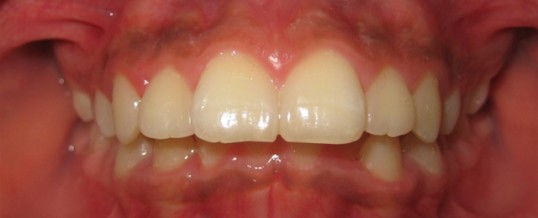
Why do people get braces on their teeth? It’s certainly not to make a fashion statement nor is it to intentionally inflict the discomfort that typically accompanies braces. No, it’s because they want straight teeth. But the reality is that there is more to it than that … much more.
When I was a dental student, I had a keen interest in orthodontics. I had braces on my teeth when I was in college, so the memory of the day when my braces were removed was still fresh in my mind. I remember smiling all day long and thinking how cool it would be to be an orthodontist. The idea of creating beautiful smiles seemed like a really rewarding profession to me, so I decided to forge ahead and focus on someday becoming an orthodontist. However, my dental school didn’t outwardly encourage their students to delve too deeply into orthodontics. It was almost as if there was this unwritten rule that “orthodontics was best left up to the orthodontic specialists themselves”. There was little attempt at educating their dental students in the fine art and science that is orthodontics. My dental school had it right all along. I didn’t understand this way back then, but I certainly do now.
It wasn’t until very early in my orthodontic training that I learned what braces were really all about. You see, straight teeth are important, but proper function is equally important. When a patient is first evaluated by an orthodontist, several measurements are taken to help determine how best to treat that patient. It is not a “cookie-cutter” process because everyone’s bite is different.
For example, if a person has severe crowding, it is usually necessary to remove some teeth to alleviate the crowding and create sufficient space so that the remaining teeth can be straightened. On the other hand, if in another person there are spaces between the teeth, no teeth will need to be removed and the spaces can simply be closed.
Growth is another important factor in how some people are treated. If a child has a large overbite, it is still common to have the child wear a headgear at night to help retract the upper front teeth. However, if an older teen or an adult has a large overbite, there is little or no growth left. Thus a neckgear will not be effective in an older person. Therefore, sometimes it makes sense to remove two upper side teeth so that the upper front teeth can be retracted to eliminate the overbite. These are examples of different methods to establish the proper function of the teeth.
Straightening teeth is basically a given. It’s simply a natural part of the entire orthodontic process. The hard part is determining how to establish the proper function. As I stated earlier, most dental schools are not in the process of educating their students in the area of orthodontics. It takes someone with advanced training in orthodontics to truly know how to not only straighten the teeth, but to make them fit together properly as well.
For many years, the task of providing people with quality orthodontic treatment was left up to the orthodontists themselves. Yet there always have been a small percentage of general dentists who have dabbled in orthodontics to help supplement their income. For most general dentists however, providing a service like orthodontic treatment to their own patients wasn’t worth their while. The reason was simple, most general dentists felt that they never were adequately trained in orthodontics and it wasn’t worth carrying the necessary inventory of braces to truly make it cost effective.
With the advent of Invisalign, things are changing in the area of orthodontics. Invisalign is a relatively new way of straightening teeth. In essence, a series of clear aligners are custom-made by a company called Align Technology for each patient that very gradually move and straighten the teeth. It’s still in its infancy relative to braces. It was developed in the late 1990’s, and it wasn’t until the early 2000’s that it became readily available to orthodontists. It’s so new in fact that most orthodontists today had to take special courses just to learn how to use it in their own practices.
More recently, Invisalign has been introduced to general dentists. With the down-turn in the economy and the fact that there is minimal inventory required since the aligners are manufactured elsewhere, many dentists are now turning to Invisalign as an easy way to help supplement their income. Remember though that straightening someone’s teeth and providing the proper function are two entirely separate things. As a colleague recently said to me, “just because they’re straight doesn’t mean it’s great”. How true, how true. Unless it is a simple case, it really is best to leave it up to the orthodontic specialists themselves to straighten teeth and obtain optimum function.
By Gary Reichhold, DDS
OCT

About the Author:
Dr. Gary Reichhold and his partner Dr. Stephen Tanner have been proudly serving families in Concord, Walnut Creek, Clayton, Pleasant Hill and the surrounding communities for over 20 years. Their office is conveniently located in central Contra Costa County and their experienced team is committed to providing you and your family with exceptional orthodontic care.